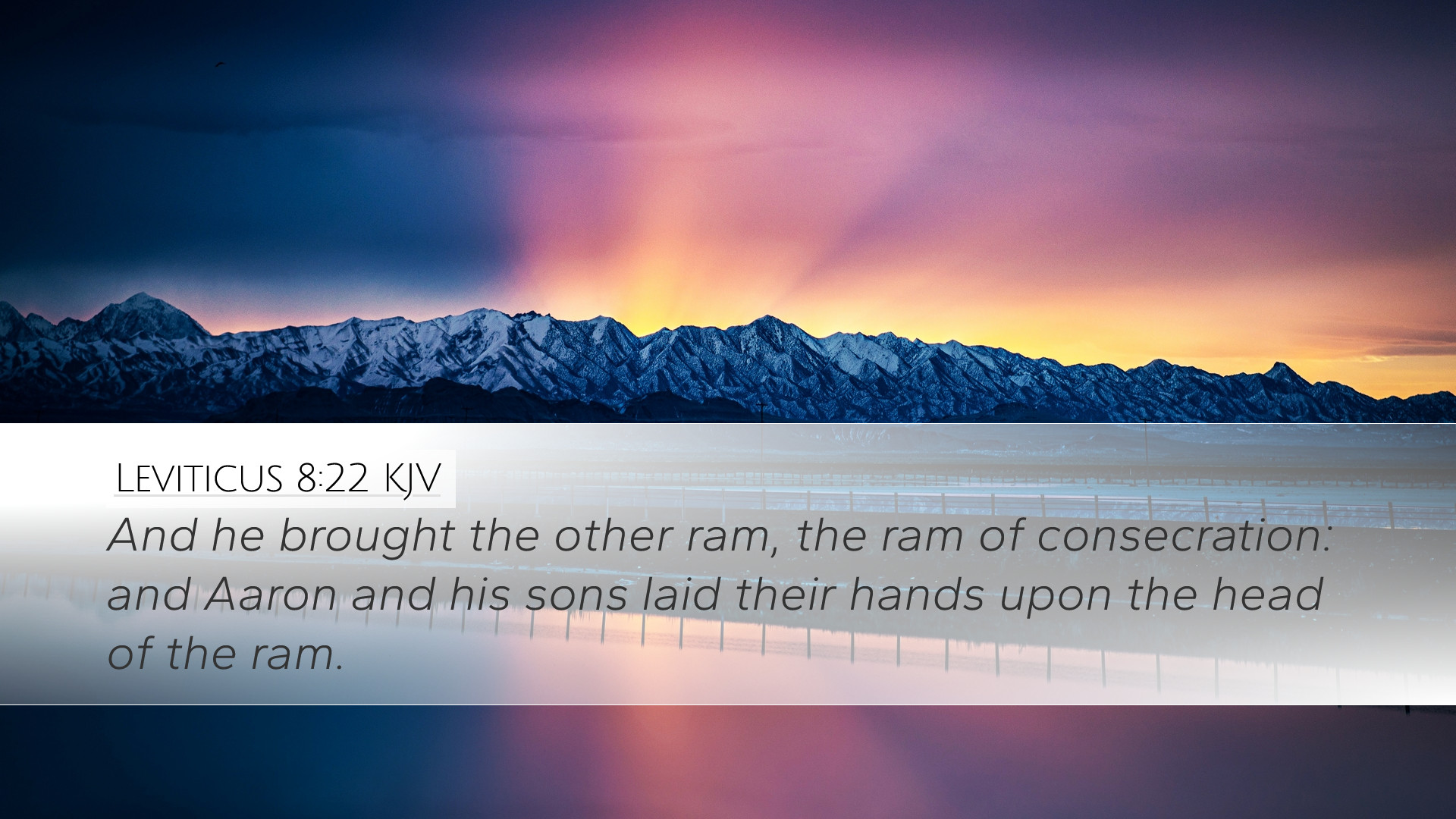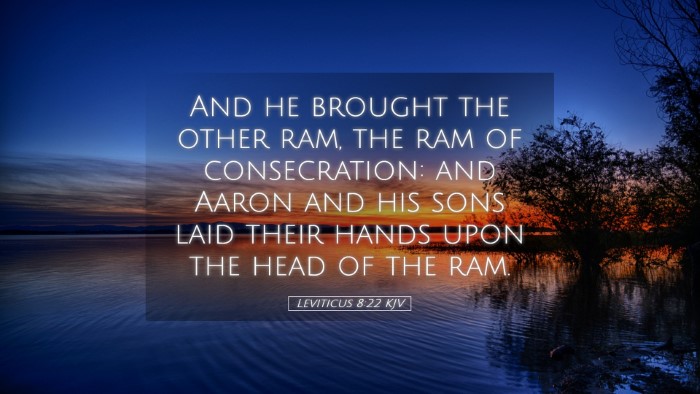Commentary on Leviticus 8:22
Verse: Leviticus 8:22 - “And he brought the second ram, the ram of consecration: and Aaron and his sons laid their hands upon the head of the ram.”
Overview
This verse is key in the context of the Priestly Ordination, highlighting the method of consecration and the ceremonial actions that were integral to it. The act of laying hands signifies identification and a transfer of symbolic meaning, which is foundational to understanding the sacrificial system instituted in the law of Moses.
Significance of the Ram of Consecration
1. Symbol of Dedication: The “ram of consecration” stands as a representation of full dedication to God’s service. The use of a ram, an animal often associated with sacrifice and atonement, underscores the seriousness of the commitment.
2. Completeness of Sacrifice: Albert Barnes emphasizes that the ram signifying consecration completes the sacrificial act, reinforcing the notion that consecration and service unto God are spiritually and practically intertwined.
The Act of Laying on of Hands
The act of laying hands upon the ram is rich in theological significance. It serves multiple purposes:
- Identification: By placing their hands on the ram, Aaron and his sons identified themselves with the sacrifice. This act signifies their recognition of the role of the ram as a substitute for themselves.
- Transfer of Responsibility: Laying hands is a symbol of transferring guilt and responsibility, aligning with the broader sacrificial system where the sin of the people is placed upon the animal.
- Public Declaration: This gesture was also a public declaration of their commitment and intent to fulfill their duties as priests of God.
Theological Interpretation
The implications of this ritual extend beyond mere ceremonial practice. According to Matthew Henry, the laying on of hands is indicative of the believer's relationship with the sacrificial system and with God. The priests, acting on behalf of the people, symbolize the need for mediators between humanity and the Divine.
Implication of Suffering: Adam Clarke notes that the ram's blood, associated with the act of consecration, prefigures the ultimate sacrifice of Christ. The New Testament teachings reveal Jesus as the perfect fulfillment of the sacrificial system established in the Old Testament.
Applications for Today
This verse encapsulates valuable lessons for contemporary believers, particularly for pastors and theologians:
- Consecration to Service: Just as Aaron and his sons were consecrated, modern believers are called to dedicate themselves wholly to God’s service—acknowledging the profound responsibility this entails.
- Understanding Sacrifice: The imagery of laying hands serves to remind believers of Christ's ultimate sacrifice and the personal responsibility to live a life that reflects gratitude for this grace.
- Role of Mediators: The priestly role is echoed in the New Testament, where believers are called a “royal priesthood” (1 Peter 2:9). This emphasizes the communal aspect of faith and the importance of intercession through prayer and support.
Conclusion
Leviticus 8:22 serves as a pivotal moment in the establishment of the priestly order. The act of laying hands upon the ram symbolizes a deeper spiritual truth regarding identification, responsibility, and the nature of sacrificial worship. As scholars and ministers reflect on this ceremonial consecration, may it inspire a renewed commitment to serving God faithfully and understanding the significance of Christ's sacrifice for humanity.


